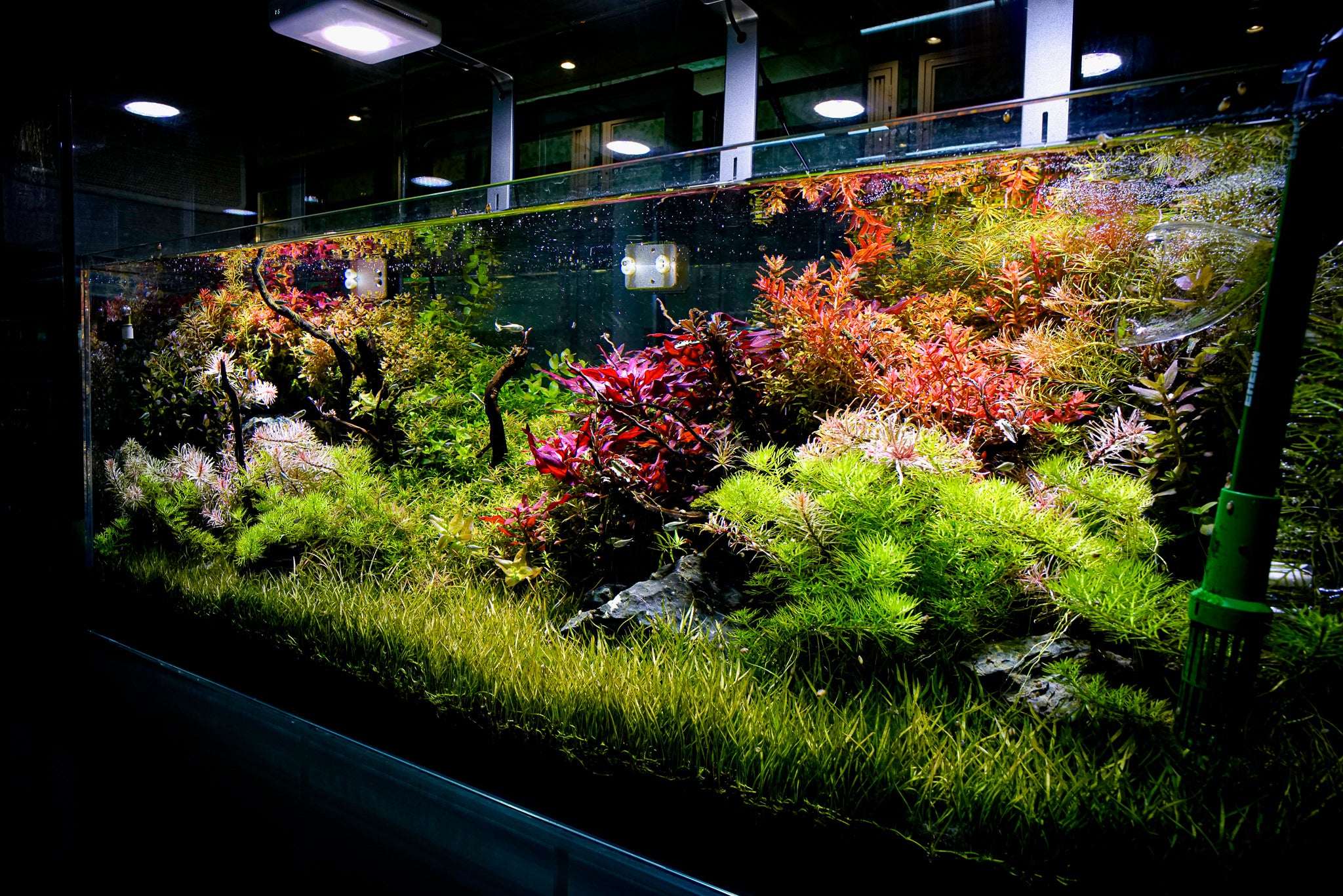
Understanding Nitrogen in Aquascape
Nitrogen and NPK
Nitrogen is an essential element in aquascaping. It is categorised as a macro nutrient which means that it should be kept in a certain concentration all the time. It also has a relation with 2 other macro nutrients which are phosphorus and potassium. The 3 of them need to be kept in a certain ratio in order for plants to utilise them successfully. The ratio of the 3 elements is often referred to N:P:K whereby N stands for nitrogen, P for phosphorus, and K for potassium. Depending on who you ask, the ratio often varies from 5:1:20 to 20:1:15. These answers are all not wrong as sometimes the ratio doesn’t need to be that exact.
What happen when your nitrogen drops too low?
Today we are going to talk about nitrogen. Aside from the N:P:K ratio, the concentration of nitrogen should not be lower than 5mg/l. Nitrogen deficiency will not only cause stunt growth but also thread algae, cynobacteria (blue green algae), and even hair algae. An early symptom of nitrogen deficiency is that older leaves appear to be losing patches of color while the newer leaves appear fine.
Nitrogen VS Nitrate
Nitrogen comes in various forms; nitrate is the most commonly used form. Nitrate is naturally generated by our bio filter when it converts ammonia (NH4) to nitrite (no2) to nitrate (no3). In a normal or reef aquarium, we would want to maintain the lowest level of nitrate as much as possible but in aquascaping there is always a deficiency since the plants use so much of it. Therefore it is necessary for us to introduce this nutrient back into the tank.
Dosing single source nitrogen VS multiple source nitrogen fertilizers
As long as we can measure its concentration in the water, maintaining it shouldn’t be a problem. To measure the concentration of nitrogen in an aquascape, we can use a nitrate tester. This is fine as long as a pure nitrate source of nitrogen being used. But there are some brands that utilise multiple nitrogen sources. This means that not all the nitrogen that is being introduced into the tank is measurable in nitrate. Brands like Continuum Aquatic use nitrate as their nitrogen source, while Seachem and Aquavitro use multiple sources. Multiple sources of nitrogen are easier to be absorbed by most plants therefore it is more effective. But at the same time, it might be confusing for beginners.

Depending on the brand, the nitrate contained in its nitrogen fertiliser differs. For Seachem Flourish Nitrogen, nitrate is ⅕ of the total nitrogen, while Aquavitro Synthesis have ¼ of its nitrogen as nitrate. So if you’re using Seachem Flourish as your aquascaping nutrient, you’ll have to multiply your nitrate test result by 5 to get the actual nitrogen reading, or multiply it by 4 if you’re using Aquavitro.
For example, if you have a nitrogen concentration of 10mg/l in your tank and you’re using Seachem Flourish Nitrogen as your nitrogen source, then you should get a reading of 2mg/l in your nitrate tester. This will also mean that most conventional nitrate testers will not work as most of them have a minimum measurement of 10mg/l only. I highly recommend using a Salifert NO3 tester as it can measure as low as 1mg/l.
What happens when you have too much nitrogen?
It is advised that nitrogen should always be kept at 5-20mg/l. Having higher than 20mg/l of nitrogen doesn’t necessarily cause any harm as long as you have a balanced ratio of the other 2 elements but it will affect the color of your red plants because lower nitrogen levels result in redder colours.
How to lower nitrate
In the event that one of the 3 nutrients is depleted, it will cause the rise of another nutrient as plants can’t efficiently utilise the remaining nutrients if one of them is missing. Therefore if there’s a serious deficiency of phosphorus, nitrate could accumulate in the water. This can be corrected by adding more phosphorus into the water. You can add up to 1mg/l of phosphorus daily without any ill effect. Although depending on how high your nitrate level is, it might take a while for it to drop and you’ll also find that the 1mg/l of phosphorus that you’ve added will drop back to 0 on the next day.

Products such as Sicce ZeroNitra can also be used to effectively remove nitrate from the aquarium. A single box can absorb up to 4500mg of nitrate. By multiplying the mg/l of the nitrate test result with the total volume of aquarium water, you’ll get the total amount of nitrate in your tank. For example, an aquarium with 150L that has 40mg/l of nitrate will have 6000mg of nitrate in total. A box of ZeroNitra will remove 4500mg of nitrate leaving 1500mg nitrate in your tank within 48 hours. The final nitrate test result reading should be 10mg/l.
Where to get Aquavitro products?
Since Aquavitro products are not allow for online sales we can't put them in our webstore. Contact us directly via email / whatsapp / Facebook if you're interested in Aquavitro products.